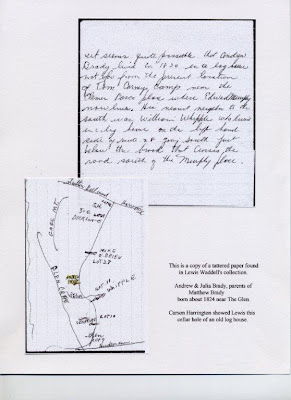On the Fifth of July, there will be a ceremony in the Ithaca City Cemetery to remember and rededicate the grave sites of two African American families. The Tompkins County Civil War Commission and the Sons of Union Veterans collaborated to clean the grave of Daniel Jackson, who was called “Faithful.”
Jackson was slave in Maryland before fleeing to Ithaca, where he joined others he had known from the South. He was a reliable worker in E. S. Esty’s tannery and at the end of the Civil War he returned to his birthplace to bring his elderly mother North to live with him. The two died in 1889 five days apart: he was 75 and she was thought to be 103. A stone has been placed to mark her resting place and the plot has been landscaped.
The second family grave is that of the Brum family where there are five stones, the major monument located this past fall was in three pieces, the larger spire down the hill, its writing mostly obscured. The City of Ithaca Department of Public Works reassembled the monument which when cleaned revealed two sides with writing. One is for Titus Brum, an African American born in N.Y. He was also a landowner and patriarch of the African American community in Ithaca.
Brum led efforts to gain political recognition for black men in the 1820s, he organized the 1827 Fifth of July celebration, and organized a committee against the Fugitive Slave Act. His home was often the site of social and political meetings. The second side of the plinth commemorates his son Ira T. Brum who fought during the Civil War in a NY white regiment enlisting from Cortlandville in 1864 and who died of disease the day after his company was mustered out of the war. Below that there is also a notice about Fred.k W. Brum, who also fought in the war. Nearby there is a small grave for an infant named Clarence, and one for their sister, Mary Brum Johnson who links the Brum family with the Johnsons who were involved with aiding Freedom Seekers fleeing through Ithaca. The final two modest stones are marked I.T.B. and F.W.B., stones set at the time of those men’s deaths. There is no notation for Eunice Woods Brum who most likely, with her son-in-law George Johnson, erected the large monument upon the death of Titus in 1881.
Why hold this ceremony on the Fifth of July? For the very reasons that Frederick Douglass gave in his 1852 oration “What to the Slave is the Fourth of July?” In Tompkins County we hope to recognize these mostly forgotten families and the goal of equal access to our political, social and economic life for all, and to think about goals yet unmet. The Mayor of Ithaca Sevante Myrick will speak at the ceremony, as will The Reverend E. Alex Brower of the A.M.E. Zion Church- the co-chair of the Civil War Commission the Hon. Michael Lane, and the County Historian. The ceremony will be held at 6 pm, rain or shine but not in thunder or lightening. All are welcome.
Photo: Volunteers clean and landscape the Brum family plot.
Carol Kammen is Tompkins County Historian, a Senior Lecturer at Cornell University, and the author of several books, including On Doing Local History: Reflections on What Local Historians Do, Why, and What It Means and The Peopling of Tompkins County: A Social History.










